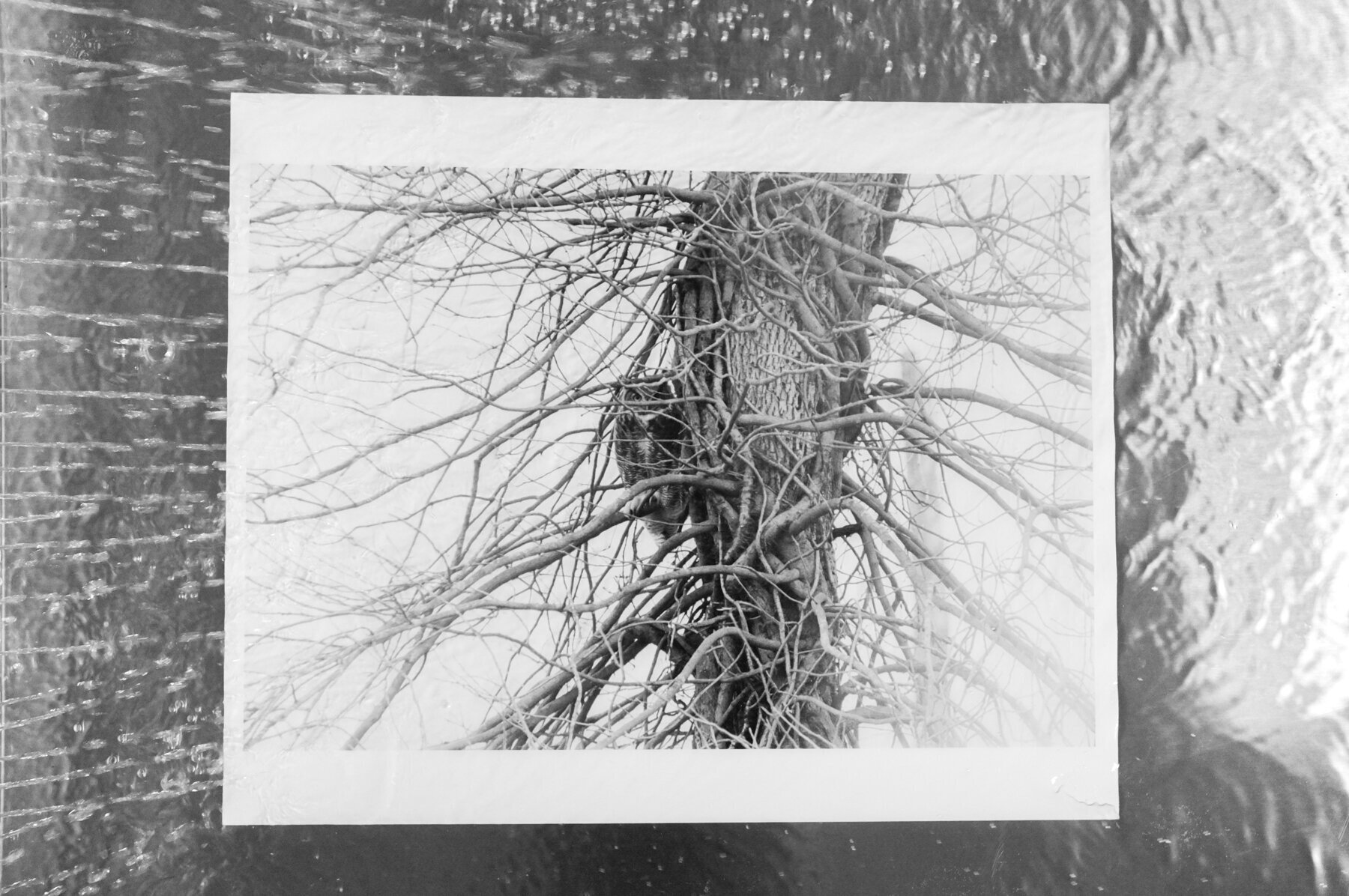Writing with light.
All of Charcoal’s prints are produced using light and photo-chemical reactions in paper. This is a distinct difference from much of contemporary photographic print-making.
The bulk of objects we see today with labels of inkjet, giclee, archival pigment on Hannemuhle or otherwise are incidentally about light. What these latter prints show us is modulated ink sprayed onto the surface of fine papers, whereas silver prints are light itself, captured within the fabric of photographic paper.
The language of photography, the etymological fact of it being “light writing,” is most truly expressed in the gelatin silver print. Not only light but time and the hand are factors in producing a silver print; the longer the print is exposed to light, the darker its tones become. Such a work results from the measured control of a photographic artist in the midst of the work’s creation.
The black-and-white, gelatin silver print reiterates the fundamental process of photography-that is, the apprehension and molding of light.
Done properly, with adequate fixing and washing, silver printing has proven itself to be fully archival. Black-and-white photographs from the 19th century remain vivid today.



